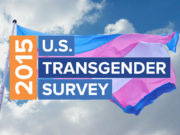Widespread panic is starting to set within the transgender community over the current availability of injectable estrogen in the United States. The growing concern started when Out magazine sounded the alarm in early August 2016. As if our community doesn’t have enough to deal with already, news outlets across the country are now starting to run with the story and the concerns are growing. So is it time to panic? Is there really any truth to it and should we be concerned?
What exactly is the problem?
Estrogen can be administered in a number of different ways. Some of the most common methods come in the form of pills, patches, pellets and injections. The current concerns are over injections of Delestrogen (brand name) and estradiol valerate (generic version). There are two companies that are currently producing the hormones in injectable form, Par Pharmaceuticals (Delestrogen) and Perrigo Pharmaceuticals (estradiol valerate). The injectable estrogen comes in three dosages, 10 mg/mL, 20 mg/mL and 40 mg/mL. As recently as 2015, high volume treatment centers such as Callen-Lorde in Manhattan, which currently treats over 900 individuals with hormone replacement therapy, was forced to make changes to the way they prescribe injectables. Originally the 40 mg/mL dosage, which is the most commonly prescribed amount, became unavailable and the center compensated by prescribing double doses of the 20 mg/mL. As they are now having trouble even getting the 20 mg/mL dosages, they are being forced to consider quadrupling the 10 mg/mL dosage, which is considered an unhealthy amount of liquid to inject.

What is slowing down production?
What we do know is that both Par and Perrigo claim the reason is that they had to change an active ingredient in the formula that now requires approval by the FDA. The manufactures will not provide information regarding what the original ingredient was, nor will they provide any information regarding what the new ingredient is. The manufacturers claim the original source of the active ingredient stopped creating it altogether, forcing them to change to the new ingredient. Par claims they already have thousands of vials that are ready to be shipped; however they are pending the FDA’s approval. What is concerning is not only the delays, but the secrecy regarding the ingredients of the medication.
What is the holdup with the FDA?
The problem with the FDA is that when it comes to approving new drugs, their staff is limited. In an interview with the Guardian, FDA Spokeswoman Andrea Fischer said the agency is working with Par and Perrigo and “awaiting additional information from the manufacturers.” Fischer did acknowledge the issue. “The FDA recognizes this is an important drug, and will do whatever we can to help return the drug to the market for patients as quickly as possible.”
You can check for updates regarding the FDA’s approval status here.

Should we panic?
Not just yet, however we do need to be concerned and take action before it becomes an even bigger issue. Due to government bureaucracy, it is not uncommon for lapses in the availability of certain medications pending FDA approval. Pharmaceutical companies can also have manufacturing delays. For example there is a shortage of certain types of penicillin due to production delays being experienced by Pfizer. What is creating greater concern with estrogen is that it is available in the 10 mg/mL dose, most commonly used by postmenopausal women. It gives the appearance that the dosages for transgender women are not a priority. What has made it even worse is that estimates for the availability of injectable estrogen have moved from September 2016 to October 2016 and now sometime in the fourth quarter of 2016.
What can we do about it?
For those who currently reside in areas that are most affected by the shortage there are options. Though injections are the most popular and preferred method of administration for many transgender women, there is currently no shortage in pills, patches or pellets. Though many see positives and negatives with all methods of administration, those options are still available if things get desperate. There is also compounding, a process where a pharmacist can create an injectable out of one of the alternative estrogen products, however this process could be expensive, costing hundreds of dollars. Of course this is not want to be told and this is not an acceptable solution, but we need to know there are options should the situation get any worse.
We can speak out about this issue and help those that are fighting for us. Currently the National Center for Transgender Equality and the Human Rights Campaign have petitioned the FDA to place a priority on the approval process for this drug. We can lend our support to these organizations. We can also demand transparency regarding the ingredients of these injectables. We can be there for each other and work together to put pressures where they need to be. We can also write to our elected officials regarding our concerns.
So is it time for absolute panic? Not just yet, but it is time for serious concerns. Yes this is one more thing to add to the ever-growing pile of issues we face as transgender people, but we are resilient and we will get through it, just as we always do.
Stay safe and keep fighting for all of us,
Love and peace,
Mila Madison
































